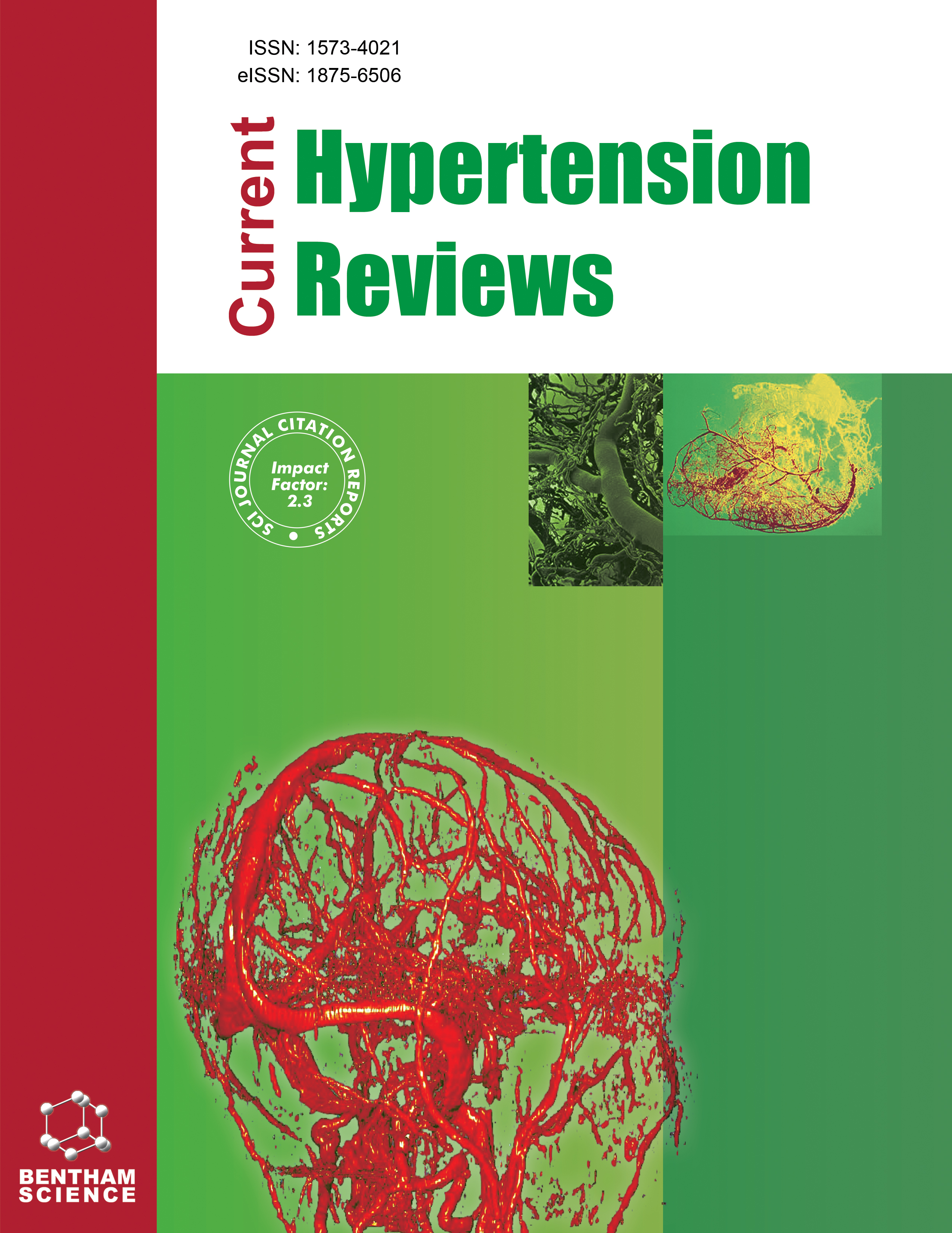- Home
- A-Z Publications
- Current Hypertension Reviews
- Previous Issues
- Volume 10, Issue 2, 2014
Current Hypertension Reviews - Volume 10, Issue 2, 2014
Volume 10, Issue 2, 2014
-
-
Reduction of Sodium Intake is a Prerequisite for Preventing and Curing High Blood Pressure in Hypertensive Patients - First Part: Therapy
More LessThe studies on the relation between Na intake and blood pressure were started at the Brookhaven National Laboratories in Upton (New York) by Lewis K Dahl in 1961, however the story goes back to our hunter-gatherer predecessors who, between 750,000 and 10,000 years ago, ate diets proving a Na intake of 690mg/day. The relevance of this finding became evident when the data of the studies on Yanomamo Indians of B Read More
-
-
-
Reduction of Sodium Intake is a Prerequisite for Preventing and Curing High Blood Pressure in Hypertensive Patients - Second Part: Guidelines
More LessIn the last decade many guidelines and report have been published about the optimal restriction of sodium intake for blood pressure control which deserve to be discussed in the medical community at large. The list includes i. the 2005 Dietary Guidelines of the Department of Health and Human Services and US Department of Agriculture; ii. The 2010 Dietary Guidelines for Americans; iii. The 2011 Presidential Statement of Americ Read More
-
-
-
The Use of Thiazides in Chronic Kidney Disease
More LessAuthors: Feras Karadsheh and Matthew R. WeirHypertension is often difficult to control in patients with chronic kidney disease. Clinicians often view thiazide and thiazide-like diuretics as being ineffective in reducing blood pressure in patients with chronic kidney disease, and prefer to use loop diuretics, especially if the estimated glomerular filtration rate (eGFR) is below 50 ml/min/1.73m2. Recent clinical trial data indicate that thiazide and thiazide-like diuretics pos Read More
-
-
-
Children with Chronic Kidney Disease and Hypertension: Could Hypertension Footprints be Early Biomarkers?
More LessBy Ayse BalatHypertension (HT) is one of the major problems in chronic kidney disease (CKD), not only for adults, but also for children. It is one of the main factors in the progression of CKD, increased rate of cardiovascular disease, and impairment in quality of life. The most important devastating effect of HT is on the cardiovascular system. It may leave significant footprints in developing children that can be carried over to adulthood. Ex Read More
-
-
-
Central Blood Pressure in Chronic Kidney Disease: Latest Evidence and Clinical Relevance
More LessAuthors: Mengshi Yuan, William E. Moody and Jonathan N. TownendChronic kidney disease (CKD) has been consistently associated with cardiovascular disease; there is an inverse graded relationship between glomerular filtration rate and cardiovascular risk. Early-moderate CKD receives increasing recognition for its role as an independent risk factor as evidenced by its recent inclusion in the Joint British Societies' consensus recommendations for the prevention of cardiovascular disease. Read More
-
-
-
RAAS Inhibition and Cardiorenal Syndrome
More LessThe consensus conference on cardio-renal syndromes (2008) defined ‘cardio-renal syndromes’ as ‘disorders of the heart and kidneys whereby acute or chronic dysfunction in one organ may induce acute or chronic dysfunction of the other’ and identified five subtypes of the syndromes. Various pathophysiologic mechanisms underlie cardiorenal syndrome including hemodynamic derangements, reduced cardiac output le Read More
-
-
-
Effect of Oral Alkali Supplementation on Progression of Chronic Kidney Disease
More LessAuthors: Martina Gaggl, Christopher Sliber and Gere Sunder-PlassmannMetabolic acidosis is a frequent but asymptomatic complication in chronic kidney disease (CKD). In early stages of CKD acidosis is limited to the renal tissue and progresses to reduced serum bicarbonate levels. Reduced renal tissue pH and increased ammoniagenesis are the key mechanisms of the kidney to enhance acid excretion to the urine. The expressed protein patterns in the proximal tubular epithelial cells change rema Read More
-
-
-
Vascular Calcification and Subendocardial Ischemia in Hemodialysis Patients: A New Morpho-Functional Score to Assess Cardiovascular Risk: the Solofra Score
More LessAuthors: Maria L. Sirico, Lucia Di Micco, Antonella De Blasio and Biagio Di IorioBackground: ESRD (end-stage renal disease) patients have a high cardiovascular mortality risk. A morphofunctional approach of vascular calcifications and myocardial perfusion is needed for the management of ESRD patients. We used SEVR (sub-endocardial viability ratio) and Kauppila score from the dialysis population of the Independent study to create a new morpho-functional score to assess cardiovascular Read More
-
Volumes & issues
-
Volume 21 (2025)
-
Volume 20 (2024)
-
Volume 19 (2023)
-
Volume 18 (2022)
-
Volume 17 (2021)
-
Volume 16 (2020)
-
Volume 15 (2019)
-
Volume 14 (2018)
-
Volume 13 (2017)
-
Volume 12 (2016)
-
Volume 11 (2015)
-
Volume 10 (2014)
-
Volume 9 (2013)
-
Volume 8 (2012)
-
Volume 7 (2011)
-
Volume 6 (2010)
-
Volume 5 (2009)
-
Volume 4 (2008)
-
Volume 3 (2007)
-
Volume 2 (2006)
-
Volume 1 (2005)
Most Read This Month
Article
content/journals/chyr
Journal
10
5
false
en


